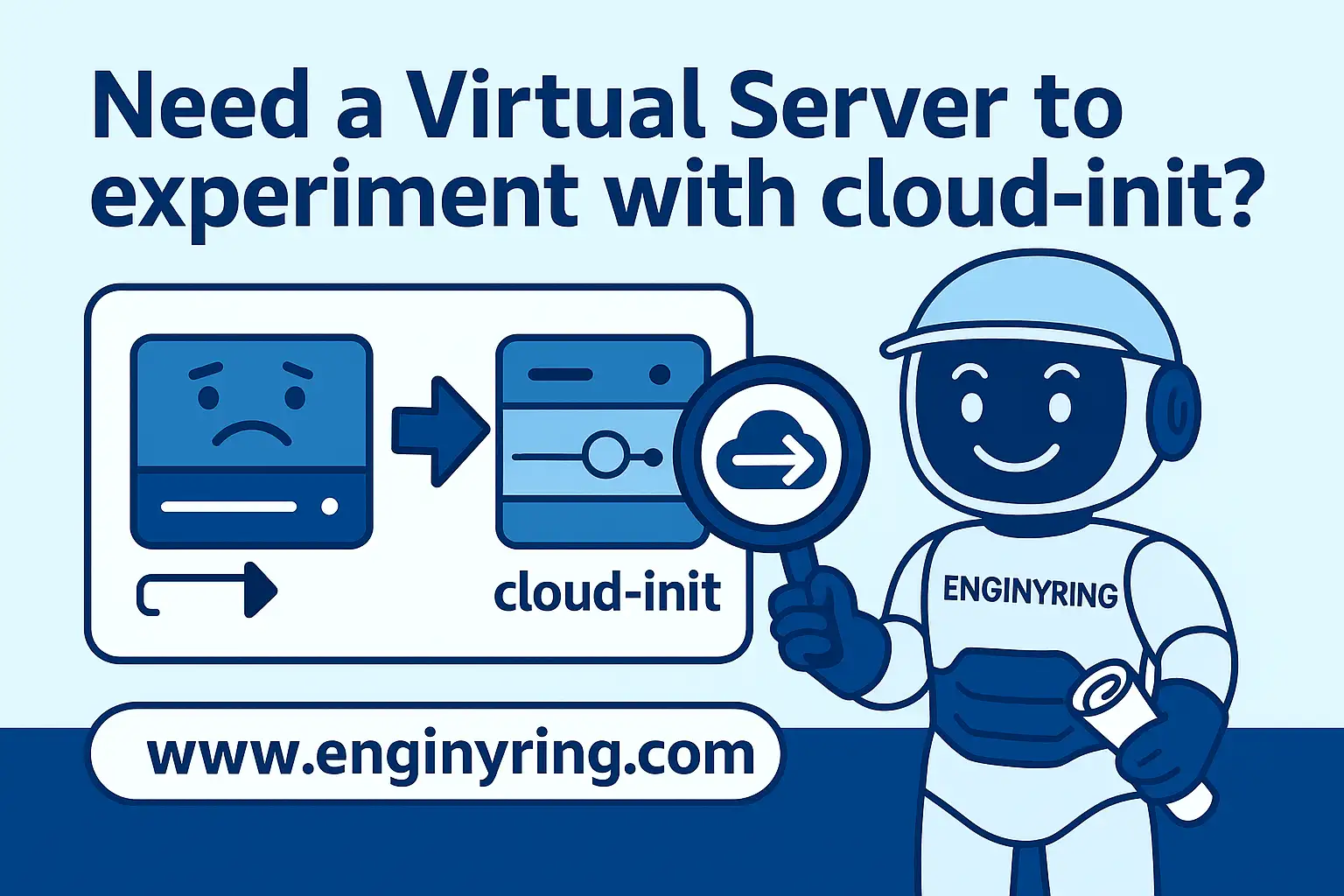Cloud-Init Configuration
<div style="flex:1 1 30%;display:flex;align-items:center;justify-content:center;">
<div style="display:flex; align-items:center; justify-content:center; height:100%;">
<a href="https://www.enginyring.com/en/virtual-servers" target="_blank" style="display:block; width:70%;">
<img src="https://cdn.enginyring.com/img/illustrations/cloudinit-ad.png"
alt="Need a Virtual Server for cloud-init testing? Check out our plans!"
style="width:100%; max-width:100%; object-fit:contain; border-radius:12px; box-shadow:0 2px 8px #0002;">
</a>
</div>
</div>
Understanding Cloud-Init
Frequently Asked Questions
Cloud-Init is the industry standard multi-distribution method for cross-platform cloud instance initialization. It is supported on most major Linux distributions and cloud platforms. It allows you to automate the initial setup of a server when it first boots.
The YAML generated by this tool is a #cloud-config file. You typically provide this configuration to your cloud provider when launching a new virtual machine. Most providers have a "user data" field where you can paste this YAML content. On the first boot, Cloud-Init on the server will read this configuration and apply the settings.
Common uses include:
- Setting the hostname.
- Configuring default locale and timezone.
- Adding SSH keys for root or other users.
- Creating new user accounts.
- Installing software packages.
- Writing files to the disk.
- Running commands on first boot.
This tool generates YAML based on your input. The security of the resulting configuration depends on the data you provide (e.g., strength of SSH keys, commands you choose to run). We do not store any of your input data. Always review the generated YAML before using it on a production server. Ensure any commands or scripts you include are from trusted sources.
Need Advanced Server Setup?
Our experts can help configure and optimize your cloud infrastructure.
Contact Us
Whether it's complex Cloud-Init configurations, server hardening, or performance tuning, our team is ready to assist.
Get in Touch